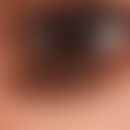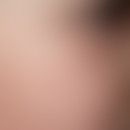Synonym(s)
Nd-YAG laser; Nd:YAG laser
DefinitionThis section has been translated automatically.
Solid-state laser in which metal ions are embedded within a crystal (here YAG = yttrium-aluminum-garnet) as the active medium. The emission lines are at 1064 and 1320 nm (infrared). Low absorption at the skin surface, large scattering effect, deep-reaching thermal interactions (deep coagulation [coagulation necroses] up to 5-6 mm), continuous and discontinuous modes of operation.
General informationThis section has been translated automatically.
- Q-switched Nd:YAG-lasers (KTP-Nd:YAG-laser) are used with pulses in the ns range at 1064 nm wavelength especially for the destruction of deep black-blue tattoos. The penetration depth at this wavelength is greater than that of ruby and alexandrite lasers with the same beam diameter. Frequency doubled at 532 nm also suitable for photothermolysis of red dyes (tattoos) and melanin.
- With the Q-switched Nd:YAG laser, pulse lengths in the picosecond range have been possible for some time. With these shorter pulses tattoos can be removed faster and better.
- 1064 nm-Nd:YAG laser with pulses in the ms range are used for photothermolysis of hair follicles and for vascular treatment. Frequency-doubled (532 nm), ms pulsed lasers can be used for vascular treatment, but are generally less effective than the flashlamp-pumped pulsed-dye laser (FPDL) and have a higher rate of side effects (pigment shifts, risk of epithelial damage with scarring).
You might also be interested in
IndicationThis section has been translated automatically.
Large-nodular vascular malformations and new formations of the skin and mucous membrane, benign melanocytic naevi, black or blue tattoos. At higher power density the neodymium-YAG laser can be used for vaporization of skin tumors.
ImplementationThis section has been translated automatically.
Standard: Laser treatment with 3.0 J/cm2, 10 Hz, may vary depending on the indication and specifications of the device used. Surface anaesthesia with local anaesthetics such as EMLA cream and cooling are favourable, infiltration anaesthesia if necessary.
Undesirable effectsThis section has been translated automatically.
Temporary deposition of hemosiderin. Postinterventional after Nd:YAG-Lasering (1064 nm) crusts and a slight purpura often appear. Postinterventional erythema, hyper- and hypopigmentation are common after KTP-Nd:YAG laser treatment. Less frequent: scarring, keloid, pigment shift.




